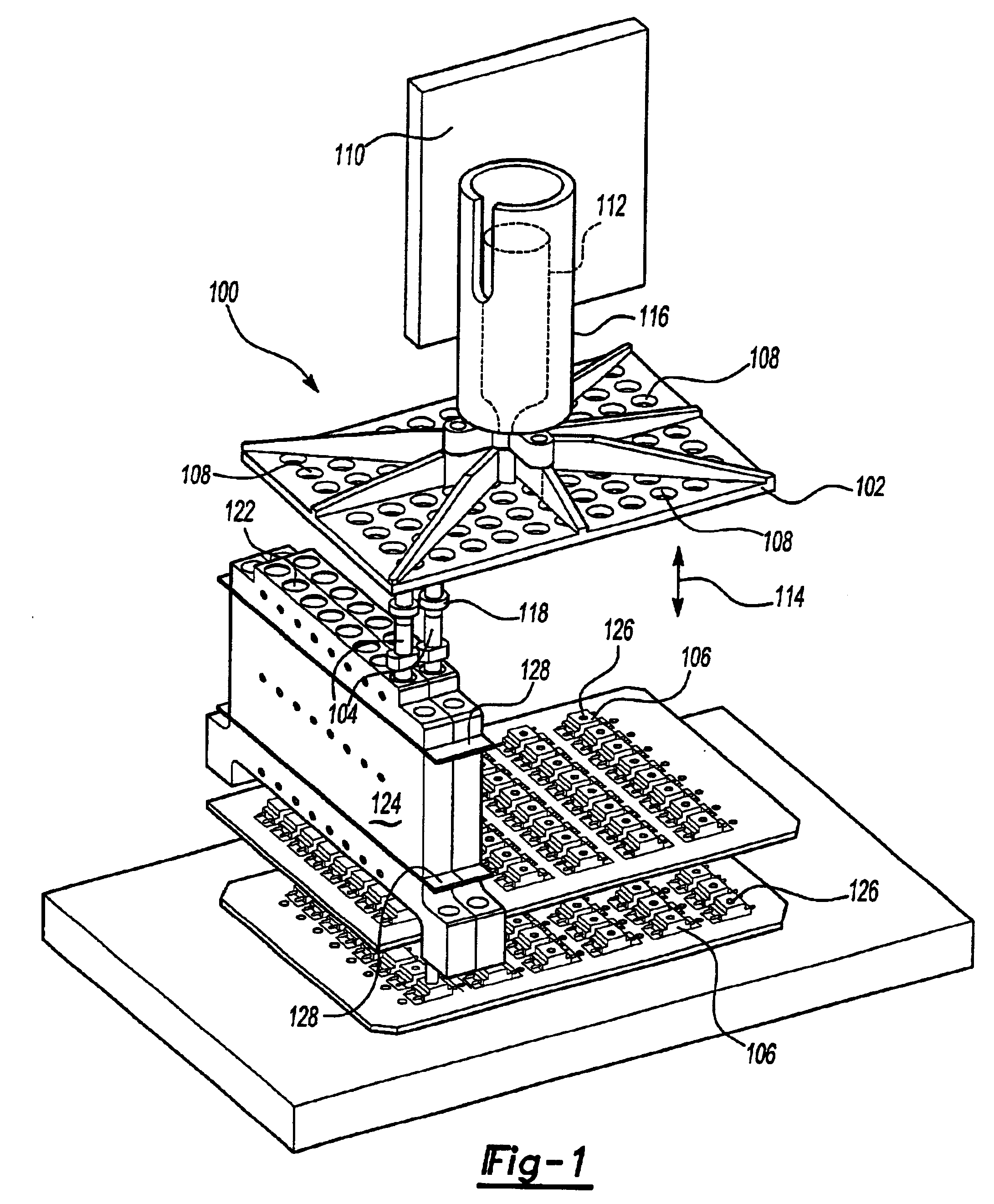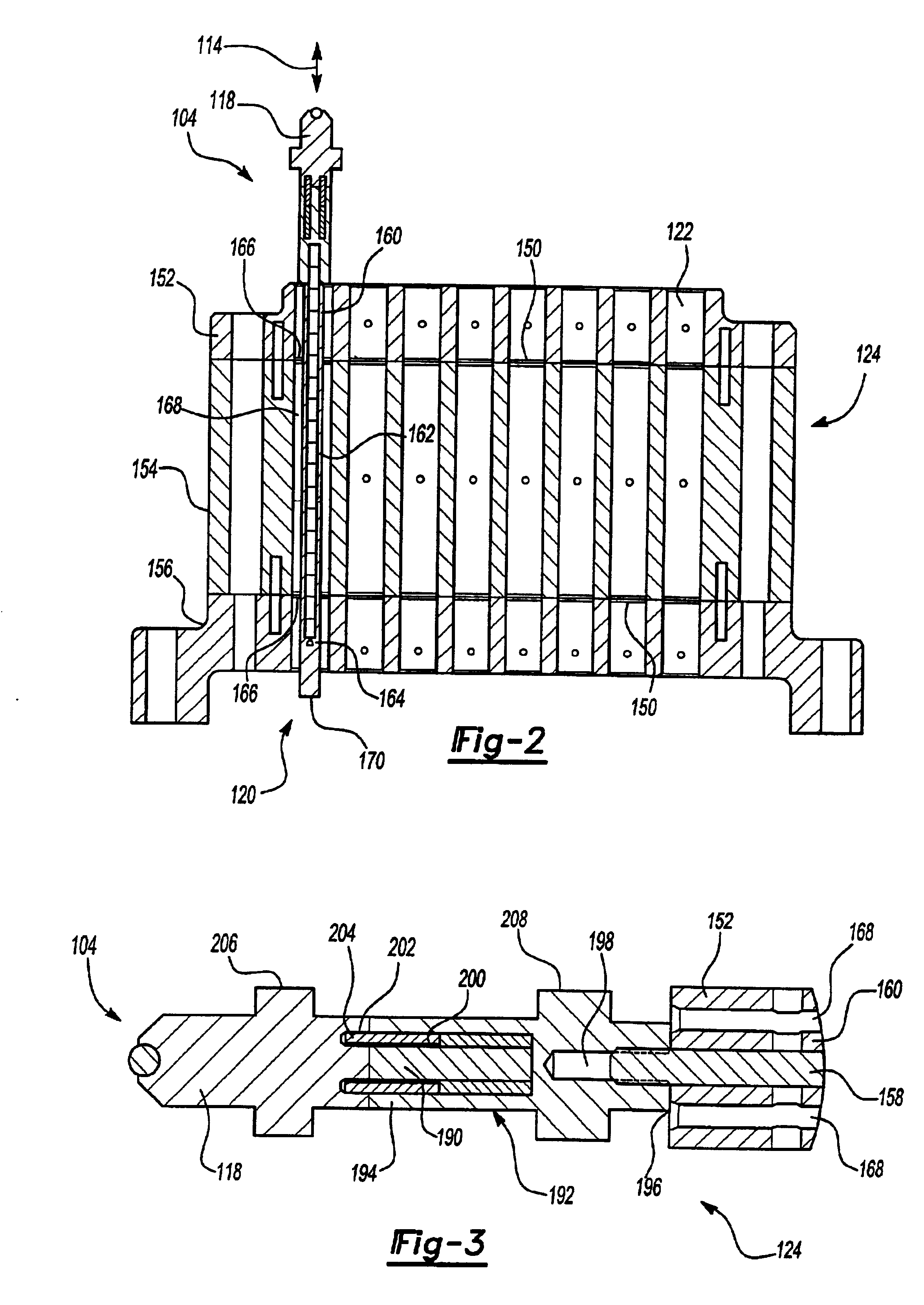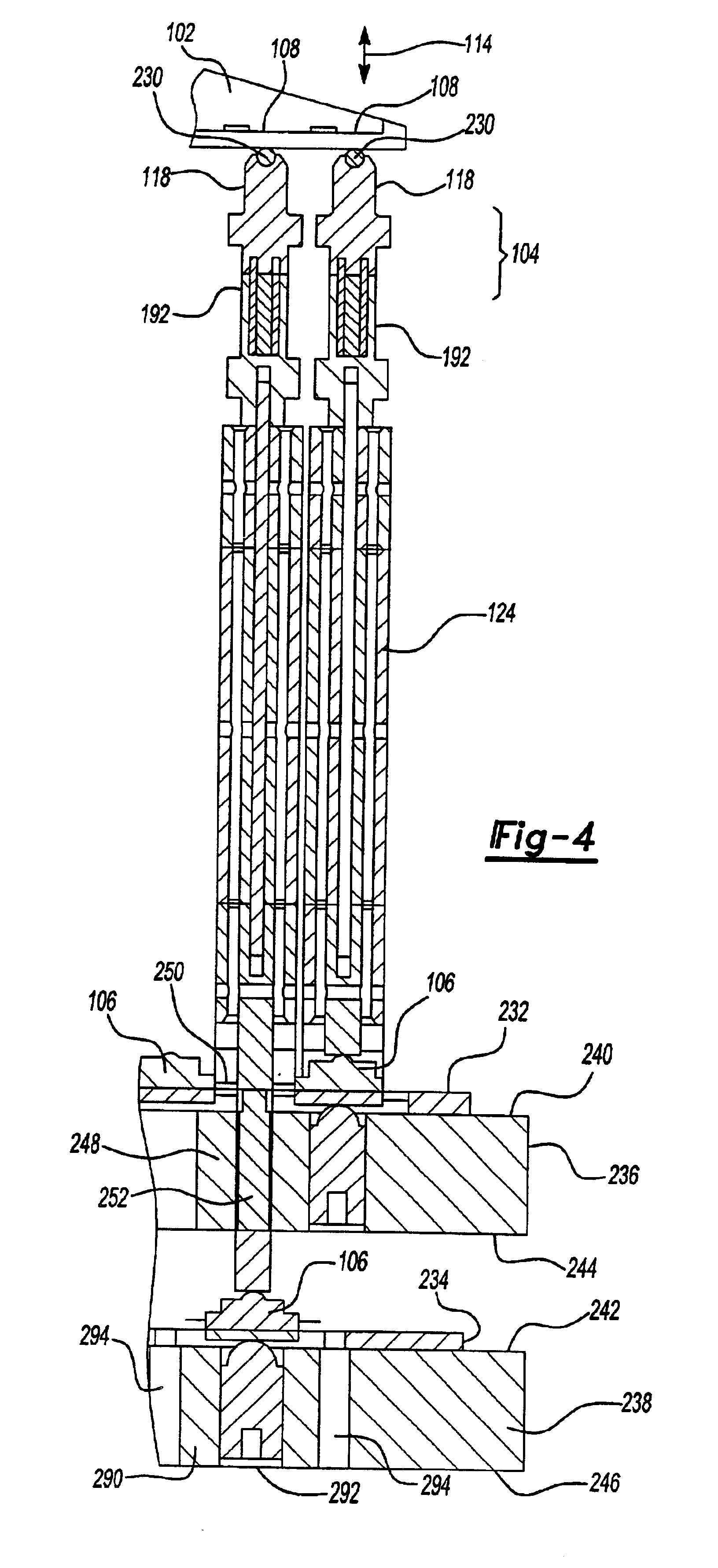Instrument for high throughput measurement of material physical properties and method of using same
a technology of physical properties and instruments, applied in the direction of instruments, simultaneous indication of multiple variables, dynamic analyzers, etc., can solve the problems of unsuitable screening purposes of conventional instruments and methods for characterizing material physical properties, impracticality of instruments for use as screening tools, etc., to achieve fast sample loading and unloading, and facilitate preparation
- Summary
- Abstract
- Description
- Claims
- Application Information
AI Technical Summary
Benefits of technology
Problems solved by technology
Method used
Image
Examples
first embodiment
[0112]FIG. 22 shows a partial cross-sectional view of a sample holder 730, test fixtures 732, and material samples 734, which the PDMA can use to screen libraries of materials based on tack. The sample holder 730 includes a group of weights 736, which initially rest in wells 738 formed in the sample holder 730. Each of the weights 736 is associated with one of the test fixtures 732, which has a working surface 740 of known composition and geometry, such as a stainless steel cylinder with a flat top. The weights 736 shown in FIG. 22 each have a relatively narrow base portion 742 that can pass through clearance holes 744 located in the bottom 746 of the wells 738. In addition, the clearance holes 744 are sized to admit the test fixtures 732 when the sample holder 730 is lowered onto the probes 104. The area of the working surface 740 of a particular test fixture 732 can be the same or different as the bottom surface 748 of a corresponding weight 736, though generally the areas are the...
second embodiment
[0114]FIG. 23 shows a partial cross-sectional view of a sample holder 770, test fixtures 772, and material samples 774, which can be used to screen libraries based on tack. Each of the test fixtures 772 comprises a hollow lower portion 776, which is connected to the base 192 of the probe 104, and a removable cap 778, which is threaded onto the lower portion 776 of the test fixture 772 forming a cavity 780. Each of the test fixtures 732 also includes a poppet 782 having head 784 and base 786 portions, and a relatively narrow neck 788 portion. The cap 778 has a clearance hole 790 that is sized to allow only the neck 788 portion to pass through, thereby allowing movement of the poppet 782 along the longitudinal axis of test fixture 772, while retaining the base 786 of the poppet 782 within the cavity 780. The test fixture 772 includes a compliant spring 792 located within the cavity 780, which exerts a force on the base 786 portion of the poppet 782. As can be seen in FIG. 23, the samp...
PUM
 Login to View More
Login to View More Abstract
Description
Claims
Application Information
 Login to View More
Login to View More - R&D
- Intellectual Property
- Life Sciences
- Materials
- Tech Scout
- Unparalleled Data Quality
- Higher Quality Content
- 60% Fewer Hallucinations
Browse by: Latest US Patents, China's latest patents, Technical Efficacy Thesaurus, Application Domain, Technology Topic, Popular Technical Reports.
© 2025 PatSnap. All rights reserved.Legal|Privacy policy|Modern Slavery Act Transparency Statement|Sitemap|About US| Contact US: help@patsnap.com



